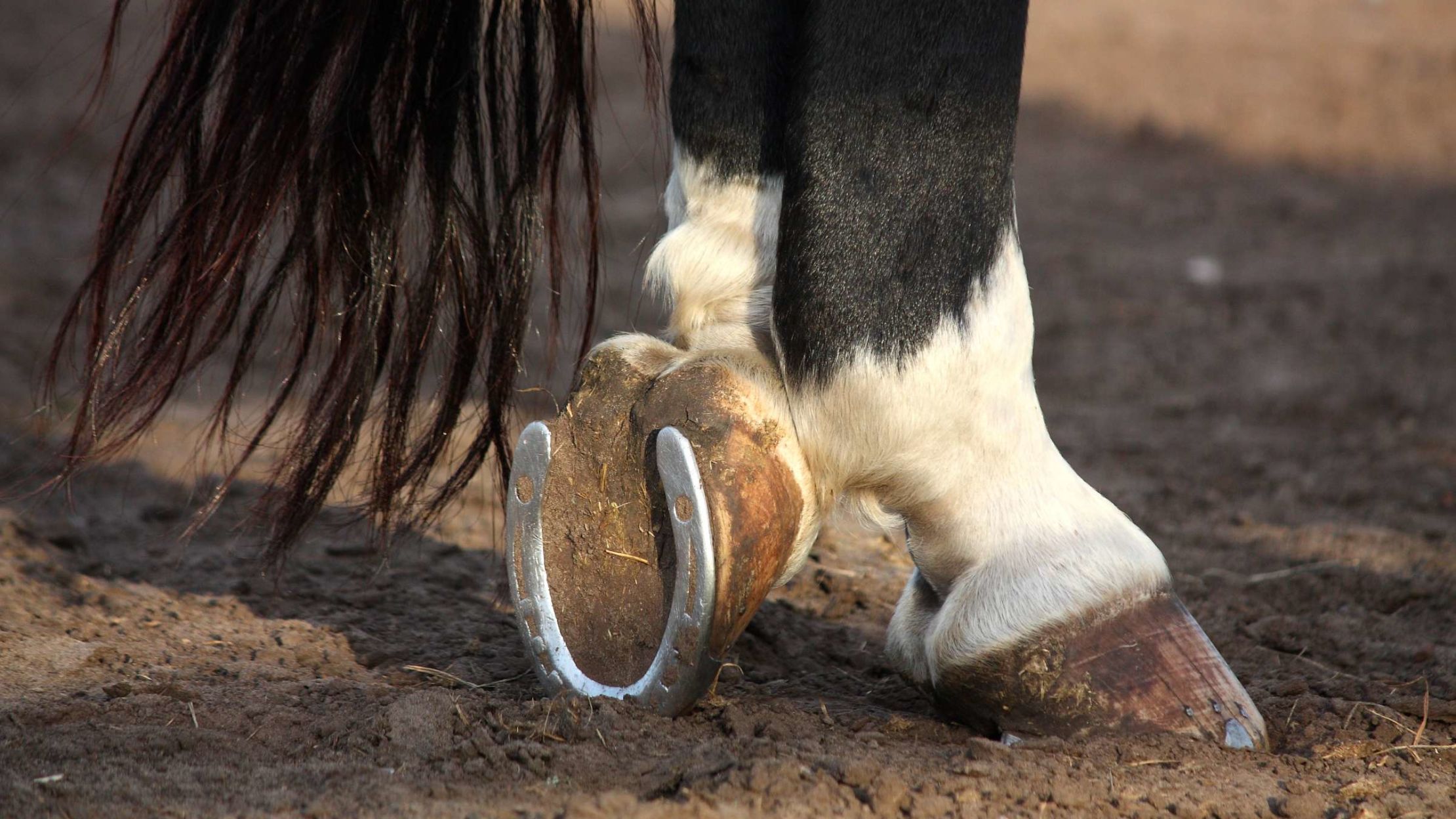Since horseshoes are both a game and a lucky charm, most people know what horseshoes look like. However, the exact reason why they sport these half-circles of metal (or other materials) is not as widely known.
The simplest answer is that horses wear shoes for the same reason we do: to protect their feet from injury from rough terrain and/or overuse. Horse hooves are admittedly much more durable than human trotters: the hoof wall, which covers the top of the hoof and forms a rim around the bottom, has no nerves or blood vessels. Horses can walk safely on all four hooves, wearing down their hoof walls as they go. For wild horses, this process usually happens at a nice gradual pace as they traverse natural terrain.
But, as Horse & Country explains, domesticated horses perform a variety of functions on a variety of surfaces – and there are a variety of reasons why many need footwear. For some, especially those who pull cars or support other loads, their hoof walls can wear down faster than they can regrow, which horseshoes can help prevent. Others may need horseshoes for traction if they are frequently exposed to icy, wet, or muddy surfaces.
Then there are those with medical issues like arthritis, laminitis (a problem with the connective tissue between the hoof wall and nearby bones) or ringbone (a degenerative joint disease that causes extra bone growth) . Some horses simply have naturally weaker hooves or uneven gaits. In all of these cases, horseshoes can help stabilize and strengthen a horse’s hooves, as well as keep them healthy.
That said, there are horses that do well without shoes at all, or only need to wear them occasionally. Farriers — who generally shoe, trim, and maintain horses’ hooves — can help horse owners determine the best course of action and type of horseshoes to use. Although some people are strongly opposed to shoeing, preferring the natural route, it really depends on each horse’s needs.
“A lot of times people talk about barefoot versus shoes like it’s a competition,” said Esco Buff, owner of Esco Buff’s professional farrier service. Practical rider. “It’s not one or the other. This is best for the horse.
So why don’t cows need shoes too?
Basically, cows aren’t expected to do as many things as horses (and in such a wide variety of terrain). We don’t run them; we don’t use them for ranch work at the Yellowstone; we don’t force them to transport tourists through Central Park in horse-drawn carriages; etc Back when oxen were a common draft animal for agricultural work, even in the 20th century, they were often shod [PDF]. Since oxen, like cows, have cloven hooves – split in half – they actually wore two separate “shoes” on each foot.
But even though cows can generally function well Naturaltheir hooves still need maintenance: they need to be trimmed about twice a year, although this depends on the cow.

